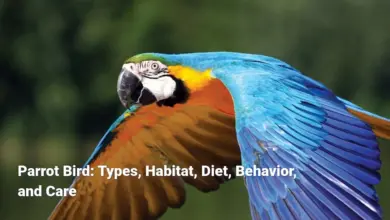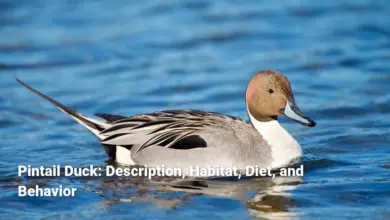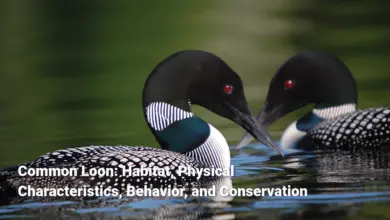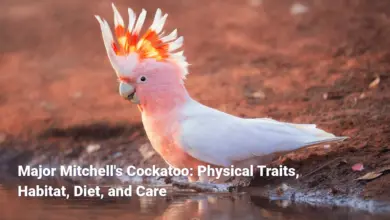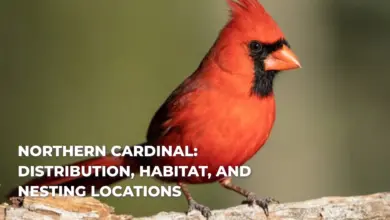Greenfinch: Breeding, Nesting, and the Intricacies of Social Flock Dynamics
Understanding the Breeding Patterns and Nesting Behaviors of Greenfinches
Greenfinch: A Comprehensive Guide
The European Greenfinch, scientifically classified as Chloris chloris, is not just another small bird flitting through the trees; it is a captivating subject of study and admiration. Distinguished by its vibrant colors and melodious songs, the greenfinch enchants birdwatchers and enthusiasts alike. This avian species plays a vital role in its ecosystem, acting as an important seed disperser while showcasing behaviors that reveal the intricate dynamics of avian social life. Their presence can evoke joy and a sense of connection to nature, whether observed in bustling urban gardens or serene rural landscapes.
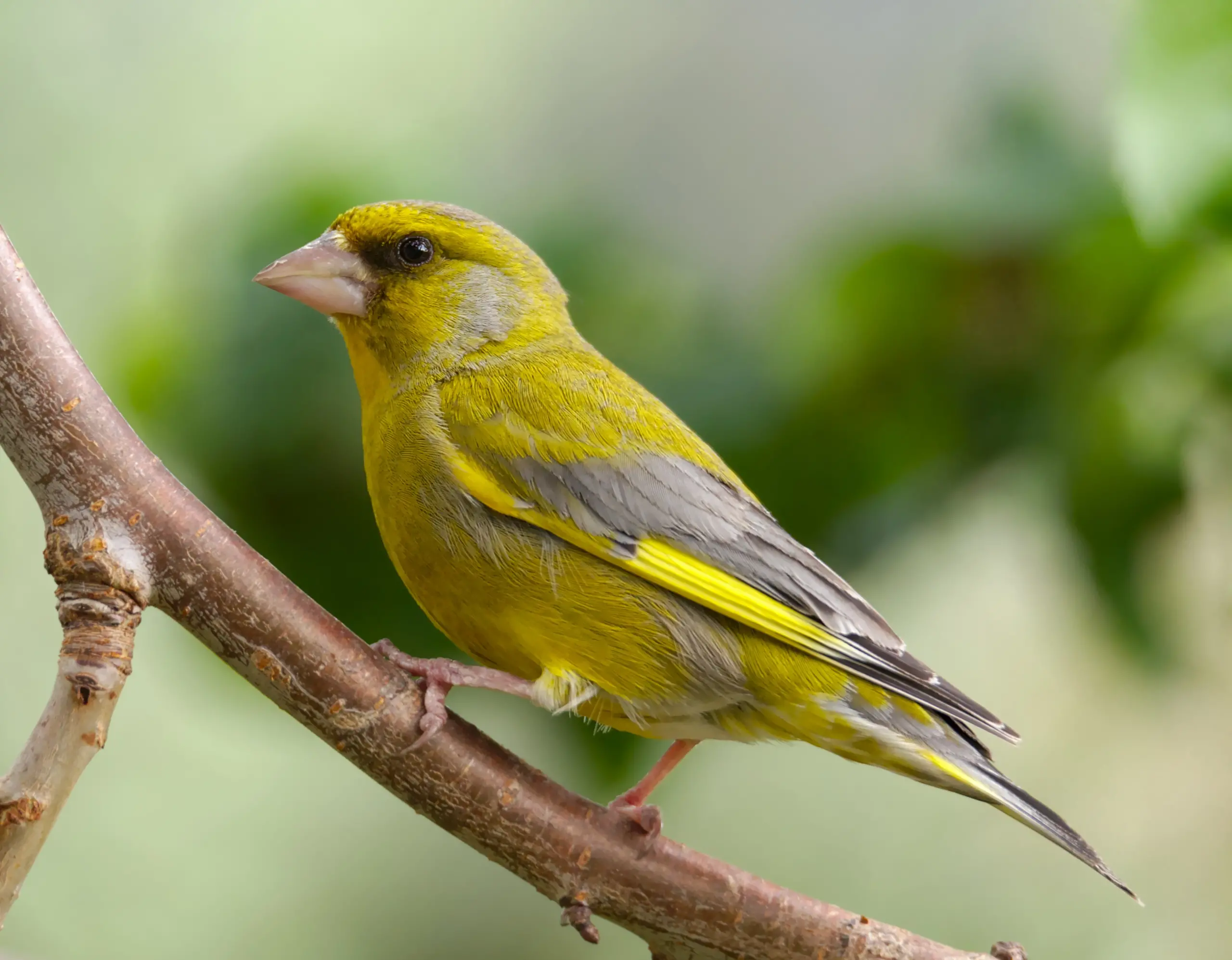
In this comprehensive guide, we will explore the intricate details surrounding the greenfinch from its characteristics, habitat, and behavior to its cultural significance and conservation status. Each section will delve deeper into the life of the greenfinch, illustrating how it survives and thrives in a world that is continually changing. Through details such as their physical attributes, their distinct calls, and their breeding habits, we aim to uncover the beauty and complexity of the European greenfinch, shedding light on the challenges they face and the efforts needed to ensure their survival.
Characteristics of the Greenfinch
The greenfinch stands out not only for its beauty but also for its behavioral traits, making it an interesting subject for ornithologists and birdwatching enthusiasts alike. Characterized by its vibrant green plumage accented with striking yellow muted tones and a stout bill, the male greenfinch is distinguished from its more muted female counterpart not just by color but by size; males are generally larger and more robust. The greenfinch can be likened to a shard of sunlight flickering amongst the branches, with each flutter radiating warmth and liveliness that brings joy to any observer.
Moreover, greenfinches are social creatures, often found in flocks. There’s a unique communal quality to their existence; like friends gathered around a table, they engage with one another at feeders, often squabbling for food yet demonstrating an underlying cooperation that ensures all can partake. These social dynamics are crucial for their survival and affect their feeding habits, as the presence of more birds increases the likelihood of finding food and staying alert for potential predators.
| Trait | Male Greenfinch | Female Greenfinch |
|---|---|---|
| Coloration | Bright green with yellow accents | Duller brown tones with hints of yellow |
| Size | Larger and more robust | Smaller and more delicate |
| Behavior | Often performs display flights | Less dominant, nurtures chicks |
Greenfinches are also characterized by a series of enchanting vocalizations that range from cheerful trills to distinct wheezes. This rich array of sounds serves multiple functions, including marking territory and attracting mates. Their songs can fill a garden with cheerful notes, embodying a sense of freedom and expressiveness that reminds us of the simple joys of life.
Size and Appearance of the Greenfinch
The European greenfinch exhibits a variety of physical traits that are not only endearing but also essential for identification. Typically, this bird achieves a length of about 15 cm (5.9 inches) and a wingspan measuring between 24.5 cm to 27.5 cm (9.6 to 10.8 inches). The male’s vibrant green plumage juxtaposed against the female’s more subdued shades creates an interesting visual dynamic reminiscent of a colorful flower blooming in a field of ordinary grass.
Males are easily distinguishable from females and juveniles due to their striking coloration. Males possess a bright green body with rich yellow accents on their wings and tails, making them resemble small, agile jewels flitting through branches. In contrast, female greenfinches don a darkened palette of browns that offers a protective cover an essential adaptation for the breeding season when hiding from predators is critical. Their stout, pale pinkish bills are perfectly designed for cracking seeds, enabling them to easily access the vital nourishment required for survival and energy replenishment.
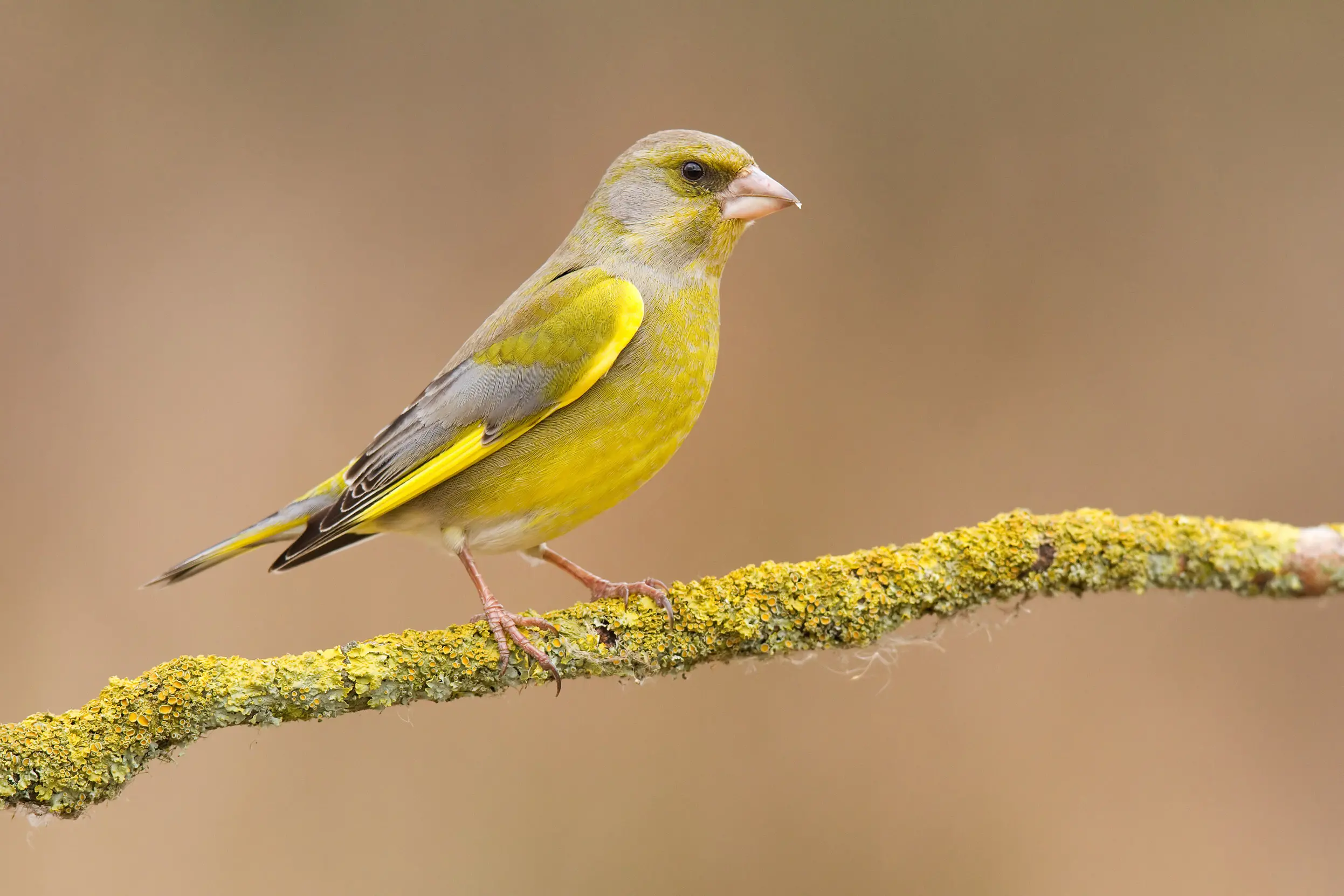
Another fascinating aspect of their appearance is the bright yellow edges on their wings and tails. When they take flight, these splashes of color dramatically enhance their visual appeal, acting almost like a banner signaling their presence in the woods or gardens they inhabit. This contrast plays a crucial role in mate attraction as well, as brighter coloration in males is often a sign of genetic fitness.
Additionally, greenfinches exhibit engaging social behaviors that are reflected in their interactions with one another at feeding stations or while foraging. They often demonstrate a unique “butterfly” flight display, where males effusively perform aerial twists and acrobatics to impress potential mates a breathtaking sight for any birdwatcher.
Plumage Coloration and Variations in the Greenfinch
The plumage of the European greenfinch is one of its most enchanting characteristics, displaying a palette marked by bold greens and vibrant yellows. Males typically exhibit a brighter shade of green, accented by striking yellow on their wings, making them quite a spectacle against the backdrop of foliage. These vivid colors can be likened to the brilliant hues of a spring meadow, signaling vitality and life.
Interestingly, the intensity of the colors is not merely aesthetic; it can vary due to factors such as diet, age, and even genetic influences. For instance, access to a high-quality diet rich in seeds and nutrients can enhance feather quality and coloration. This can be seen in studies showing that variations in diet from natural foraging can lead to significant differences in plumage brightness and health.
| Factors Influencing Coloration | Effect on Male Greenfinch |
|---|---|
| Diet | Enhanced brightness and vibrancy of feathers |
| Age | Younger birds exhibit duller hues |
| Genetic Variations | Distinct differences in coloration and patterns |
Females, on the other hand, are drabber and exhibit more neutral brown tones, primarily for camouflage purposes, especially while nesting. This essential feature allows females to blend in with their surroundings, potentially reducing predation risk during the vulnerable stages of breeding. Interestingly, female greenfinches can also display subtle yellow hints around their wings and eyes, which adds a touch of beauty to what would otherwise be a rather plain appearance.
Additionally, the changes in coloration can be impacted by the health of the individual bird. A healthier bird tends to have more vibrant plumage an important trait in attracting mates. This relationship between health and color reinforces the concept that in the avian world, visual cues serve not just aesthetic purposes but critical survival and reproductive functions.
Vocalizations and Calls of the Greenfinch
Vocalizations are a central aspect of the greenfinch’s life, serving as a means of communication that reinforces social bonds and territorial claims. The greenfinch’s song can be termed melodious, filled with trilling twitters and distinct wheezes that enliven spaces they inhabit. Not unlike a musician skilled at playing different melodies, greenfinches possess a diverse repertoire of vocalizations that convey a range of messages.
The male greenfinch predominantly provides the musical backdrop, performing complex songs that include cheerful, bubbly motifs interspersed with drawn-out wheezes, particularly during the breeding season. Their vocal performances can be likened to a soothing soundtrack in a serene garden a melange of notes that not only delights the ear but also attracts potential mates. The calls can be transliterated as “jup-jup” or “dzeeeeuuu,” capturing the bird’s essence in sound.
| Vocalization Type | Description | Function |
|---|---|---|
| Cheerful Songs | Variety of trills and whistles | Attracting mates |
| Territorial Calls | Sharp, distinct sounds | Marking territory and deterring rivals |
| Alarm Calls | High-pitched, rapid notes | Warning of predators |
Furthermore, vocalizations change across seasons and contexts. During the breeding season, males unveil their most captivating songs, showcasing their fitness and vitality for attracting females. In contrast, outside the breeding season, their songs may become more subdued and communal as they flock together in search of food. The ability to switch vocalizations depending on environmental situations exemplifies their adaptability and social intelligence.
In summary, the greenfinch’s vocalizations form a crucial linking thread in their social fabric, enhancing their communication and enriching the experience for those who are fortunate enough to listen to their song in the wild.
Habitat and Distribution of the Greenfinch
The European greenfinch is a bird of adaptability, comfortably situated in a wide range of habitats across Europe, North Africa, and Southwest Asia. Like a versatile artist who thrives in different mediums, the greenfinch flourishes in diverse environments, from urban gardens to rural farmland. They are frequently seen in woodlands and parks, demonstrating a remarkable ability to adjust to human-altered landscapes.
Greenfinches prefer habitats with an abundance of vegetation, especially in settings that offer a mixture of open areas for foraging and dense cover for protection from predators. They are often found at the edges of forests, in shrublands, and in gardens where ample feeding opportunities exist. This adaptability has rendered them common in suburban settings where bird feeders offer a reliable source of food.
| Habitat Type | Characteristics | Example Locations |
|---|---|---|
| Woodland and Forest Edges | Dense foliage and foraging opportunities | Temperate broadleaf forests |
| Agricultural Landscapes | Hedgerows providing food and nesting sites | Farmland in rural Europe |
| Urban Gardens and Parks | Access to bird feeders and decorative shrubs | Suburban parks across the UK |
| Shrublands and Hedges | Secluded areas for nesting and cover from predators | Urban gardens and wooded areas |
Their distribution extends widely across Europe, with considerable populations in the UK, France, Germany, and Italy. However, they notably avoid the far northern parts of Europe and some mountainous regions, preferring the gentler climates that allow them to thrive year-round. While some populations migrate seasonally, particularly those inhabiting northern territories during winter, many take up residence in milder areas throughout the year.
In essence, the European greenfinch’s ability to thrive in varying habitats reflects its resilience and adaptability, allowing it to navigate both natural and urban landscapes successfully.
Natural Habitats of the Greenfinch
The greenfinch thrives in a patchwork of habitats that offer the resources it needs for survival food, shelter, and breeding grounds. As a species inherently adaptable, the greenfinch can make homes in natural and human-altered environments, transitioning seamlessly between them as necessary. This adaptability parallels a skilled performer who adjusts their act to fit different venues and audiences, ensuring their continued success.
In natural landscapes, greenfinches favor areas with dense vegetation, particularly in woodland edges and forest clearings that provide ample foraging opportunities. These habitats often feature a mix of trees and shrubs, allowing them to find small seeds and fruit while benefitting from the cover to protect against avian predators.
Additionally, farm settings are particularly conducive to their lifestyle, where hedgerows serve a dual purpose by offering food sources and nesting sites. These linear patches act as lifelines for the greenfinch, connecting various habitats and ensuring the availability of essential resources.
| Habitat Characteristics | Description |
|---|---|
| Dense Vegetation | Provides cover and foraging opportunities |
| Hedges and Shrublands | Essential for nesting and protection |
| Gardens and Parks | Offers artificial food sources and shelter |
| Agricultural Landscapes | Rich in seeds and insects during breeding season |
Urban environments have also become home to greenfinches, facilitating their remarkable ability to adapt. Parks and gardens stocked with bird feeders are frequently visited by these birds, who are attracted to the easy access to seeds. This shift in lifestyle showcases their remarkable resilience as they embrace human-altered landscapes that provide for their basic needs.
Ultimately, the adaptability of the greenfinch to occupy both natural and urban habitats marks its significance in the ecological web, demonstrating its ability to integrate into diverse environments while maintaining its ecological roles.
Geographic Distribution Maps of the Greenfinch
The European greenfinch’s broad geographic range showcases its adaptability and success in various ecosystems. Detailed examination through geographic distribution maps reveals population concentrations across Europe, North Africa, and Southwestern Asia.
| Region | Presence |
|---|---|
| Europe | Commonly found in most countries |
| North Africa | Present in various locales |
| Southwest Asia | Residences in selected habitats |
| UK | Significant populations in gardens and woodlands |
In Europe, the densest populations are typically observed in the western and central regions, particularly across the UK, where gardens and parks provide ample sustenance. The greenfinch’s presence is especially notable in rural settings, agricultural fields, and wooded areas, allowing it to coexist with various species and capitalize on the availability of resources.
Maps illustrate that while the greenfinch has adapted well to human habitats, its absence from certain extreme climates such as the far north of Scandinavia or notably dry deserts suggests a selective breeding strategy. Seasonal migrations often characterize populations residing in northern parts, with birds relocating to warmer regions during harsh winters.
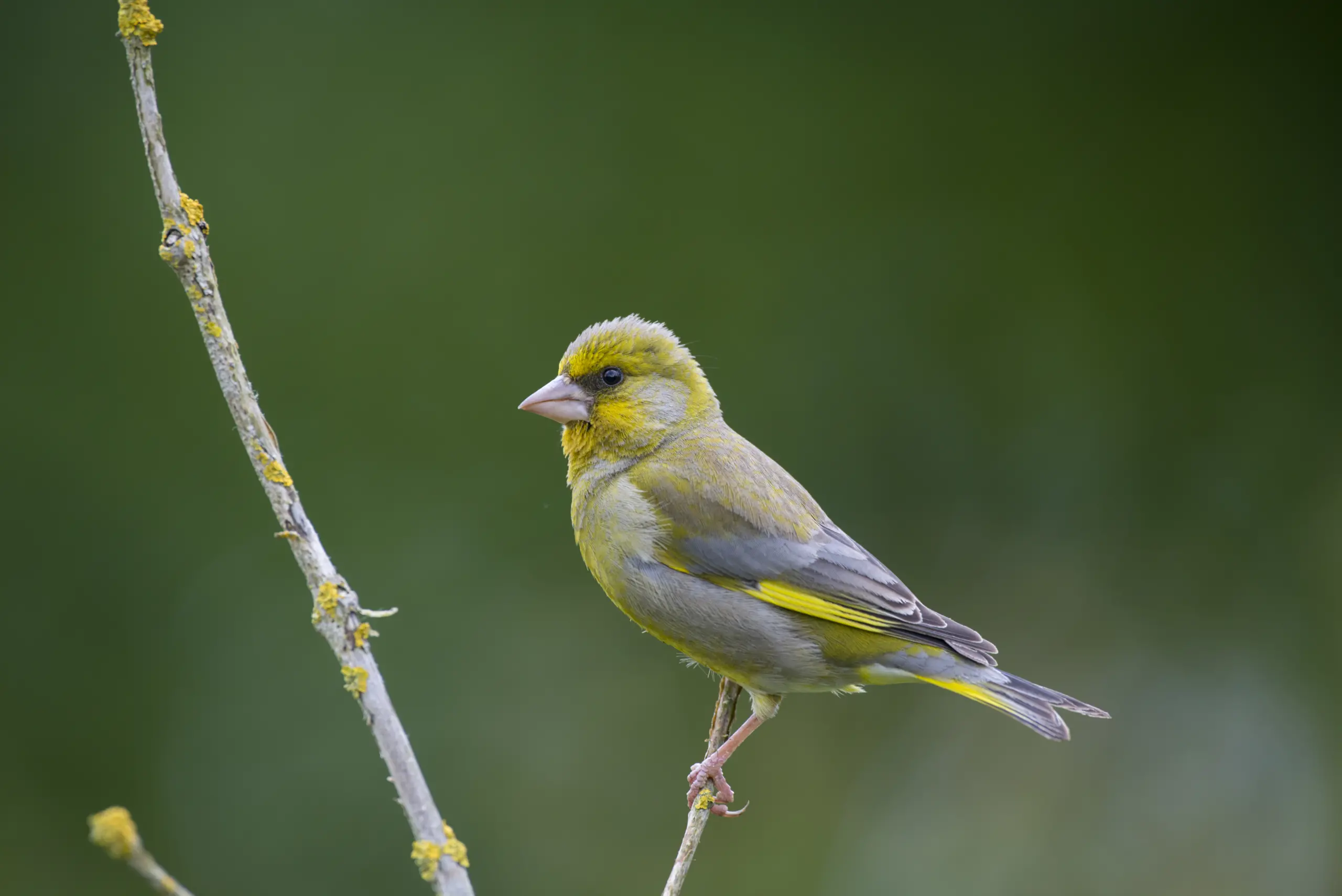
Maps featuring migratory patterns indicate that while much of the greenfinch population remains sedentary, some will venture southward during the cold months, seeking milder climates that allow them to maintain feeding opportunities.
This geographic distribution encapsulates the greenfinch’s remarkable adaptability, exemplifying its potential for population stability in both natural and urban settings.
Impact of Urbanization on Greenfinch Habitats
Urbanization presents a significant challenge to biodiversity worldwide, and the greenfinch is no exception. As cities expand and natural landscapes are converted into urban spaces, the greenfinch faces numerous pressures that threaten its existence and habitat. Urbanization can be likened to a tempestuous storm that alters landscapes, creating both opportunities and threats for the wildlife that inhabit those areas.
One of the primary consequences of urban development is habitat loss and fragmentation. As cities grow, areas previously inhabited by greenfinches are replaced by concrete, buildings, and roads, leading to a reduction in available food sources and nesting sites. This loss forces greenfinches to adapt to smaller and more fragmented patches of suitable habitat, which can exacerbate competition for resources among individuals.
| Urbanization Effects | Implications for Greenfinches |
|---|---|
| Loss of Natural Habitats | Reduction of foraging and nesting areas |
| Increased Predation Risks | Reduced shelter and cover for protection |
| Competition for Resources | Strain on local populations in scarce areas |
| Access to Bird Feeders | Some benefits but inconsistent food sources |
Moreover, urban areas may alter the availability of food types that greenfinches rely upon. While they can utilize garden feeders in urban settings, these artificial sources can vary in their nutritional value and may not provide the same benefits as natural foraging would. The inconsistent quality of these resources can ultimately affect their overall health and reproductive success.
Additionally, urban environments often come with increased predation risks. As natural cover diminishes, greenfinches become more susceptible to predators, including cats and larger birds of prey. As a result, the pressures of urban settings can reduce female survival rates and discourage nesting in less-protected areas.
In conclusion, urbanization’s impact on habitats directly correlates to challenges that greenfinches face. The struggle to balance adaptation while competing against urbanization-induced pressures highlights the need for careful ecological planning that considers wildlife conservation alongside urban development efforts.
Behavior and Diet of the Greenfinch
The behavior and diet of greenfinches are essential for their survival, offering insights into how they adapt and thrive within their habitats. Much like an artist drawing inspiration from their environment, greenfinches exhibit behaviors that reflect their ecological niches. These birds actively engage in social interactions, accommodation, and foraging strategies, which form the foundation of their diet and lifestyle.
Primarily, greenfinches exhibit diurnal feeding patterns, spending their active hours foraging for food with a keen social structure. Their feeding habits are primarily granivorous, with seeds being their primary source of nourishment. They thrive on various seeds such as those from grasses, herbs, and shrubs, often utilizing their strong, conical bills to crack open tough shells a testament to their practical adaptation to their diet.
| Behavior | Description |
|---|---|
| Feeding Habits | Primarily seed-based, occasionally insects |
| Social Interactions | Form flocks, exhibiting communal feeding behaviors |
| Aggressiveness at Feeders | Quarrels among individuals during feeding |
Social dynamics play a crucial role in their feeding behavior. Greenfinches are known for gathering at feeding sites, where they often engage in squabbles with fellow birds. These social birds typically forage in smaller groups, and this allows for communal feeding strategies that improve their chances of locating food. They are seen as bold and assertive at feeding stations, displaying behaviors to secure their access to food.

As seasons change, their diet diversifies, especially during breeding periods when the need for protein increases. Alongside seeds, they readily consume insects and larvae to provide essential nutrients for their young. This adaptability in feeding habits helps maintain their energy levels and ensures successful reproduction.
Through their behavior and diet, greenfinches showcase how adaptability and social dynamics are intertwined, leading to successful foraging and community engagement that enriches their existence in varied habitats.
Feeding Habits and Dietary Preferences of the Greenfinch
The feeding habits and dietary preferences of the greenfinch unravel the intricacies of its survival strategy in various environments. Primarily identified as granivores, greenfinches show a strong preference for seeds as their main source of sustenance. Their diet skews towards seeds from grasses, weeds, and shrubs, with particular favorites including thistles that offer nutritional density. This preference is akin to a gourmet’s desire for specific flavors, highlighting their selective foraging strategies.
Greenfinches exhibit remarkable adaptability in their feeding habits, allowing them to thrive in both natural and urban settings. In garden environments, they can often be seen hopping about, readily visiting bird feeders, where they eagerly consume sunflower seeds, peanuts, and other mixes provided by nature enthusiasts. Their propensity for visiting feeders reveals an intriguing relationship between humans and wildlife, as they adapt to human-provided resources while enriching the gardens they inhabit.
| Food Source | Description |
|---|---|
| Seeds | Primary source of nutrition, especially from thistles, sunflowers, and legumes |
| Fruits | Seasonal intake of berries and fleshy fruits |
| Insects | Supplemental protein during breeding season |
| Flowers Buds | Additional foraging during warmer months |
Diving into their seasonal eating patterns reveals further insights. During breeding seasons, their diet diversifies more dramatically to include insects that contribute necessary protein to developing chicks. This behavior mirrors the cycle of nature, as greenfinches complement their seed-heavy diet with opportunities to capture insects, enhancing the nutritional quality of their meals.
Additionally, their foraging strategies include both arboreal and ground feeding techniques. This flexibility allows them to access varied food sources, whether pecking at seeds from branches or scavenging on the forest floor. This adaptability is essential for their survival in fluctuating environments.
Ultimately, the greenfinch’s feeding habits showcase a blend of behavioral adaptability and opportunistic strategies, sculpting their role in the ecosystems they inhabit while highlighting their importance as avid foragers across habitats.
Foraging Techniques of the Greenfinch in the Wild
The foraging techniques employed by greenfinches underscore their adaptability and resourcefulness when seeking food. Their behavior and feeding strategies are as dynamic as a painter’s brush strokes on a canvas, each movement strategically crafted to gather nourishment essential for survival. Primarily ground foragers, greenfinches are adept at utilizing various surfaces to extract seeds, fruits, and insects reflecting a high level of ingenuity in their foraging process.
One of the primary techniques utilized by greenfinches involves their strong, conical bills, specifically designed for cracking open tough seeds. Their straightforward but effective approach often involves exploring under hedges, among tall grasses, or even within gardens, where they readily discover hidden treasures among the foliage. In these situations, they embody patience and focus, akin to a detective searching for clues in a dense mystery.
| Foraging Technique | Description |
|---|---|
| Ground Foraging | Scratching and pecking on the ground for seeds and insects |
| Arboreal Foraging | Perching on branches to capture seeds or fruits |
| Mixed Foraging Groups | Forming flocks to enhance foraging efficiency |
Moreover, observing them in mixed-species flocks reveals another layer of their foraging strategy. Greenfinches often associate with other ground-foraging species, benefiting from social learning and collective vigilance. This strategy improves their overall foraging success, as individuals can observe and imitate successful foraging behaviors displayed by their companions.
In urban areas, they have shown remarkable flexibility in their foraging techniques, easily adapting to feed on human-provided resources. Visiting bird feeders has become a prevalent behavior, as they navigate the challenges posed by urban settings, showcasing their capacity to thrive amidst human encroachment.
In summary, the greenfinch’s foraging techniques illustrate the combination of adaptive behavior and social interaction that is vital for survival. Their ability to navigate various environments reflects their impressive ingenuity and flexibility, giving them an edge in a world marked by constant change.
Social Behavior and Flock Dynamics of the Greenfinch
Social behavior and flock dynamics play pivotal roles in the survival and success of the greenfinch, reflecting their adaptability and complex social interactions. Relationships within flocks resemble threads weaving together a vibrant tapestry, showcasing the importance of communicative interactions in their lives. These birds are naturally social creatures, often found in groups, and their dynamics reveal fascinating insights into their social structure.
Primarily, outside of the breeding season, greenfinches form loose flocks that can vary in size depending on resource availability and environmental conditions. These flocks serve several advantages, including the enhancement of foraging efficiency and improving vigilance against potential predators. A single foraging group can locate food sources more effectively, as each member contributes to the communal search a classic example of teamwork boosting success.
| Social Behavior | Description |
|---|---|
| Flocking | Forming groups for foraging and protection |
| Aggression and Competition | Squabbles over food resources at feeders |
| Mixed-species Interactions | Collaboration with other bird species |
Flocking behavior also promotes social learning, where younger or inexperienced birds can observe and mimic the successful foraging techniques of their elders. This learning is critical as it helps younger birds acquire essential skills necessary for their survival.
While social cooperation prevails, competition can also arise, particularly during feeding times when birds jostle for prime positions at feeders. These squabbles introduce a competitive element that helps establish social hierarchies within flocks, allowing more dominant individuals better access to resources.
Mixed-species interactions further enrich social dynamics, as greenfinches often forage alongside other birds. This collaboration aids in broadening their social network, enabling wider foraging opportunities and collective predator vigilance.
Overall, the social behavior and flock dynamics of the greenfinch reflect the complexity of their interactions within their communities. These behaviors weave together a rich narrative of adaptation and cooperation, showcasing the role of social dynamics in their survival and resilience.
Breeding and Reproduction
Breeding and reproduction in greenfinches embody the natural cycle of life, displaying the beautiful intricacies of their habits. Like a painter preparing a canvas, greenfinches engage in a series of behaviors aimed at ensuring the successful continuation of their species. This section delves into the various aspects of greenfinch breeding, showcasing their mating rituals, nesting practices, and care for their young.
The breeding season for greenfinches generally occurs from March to June, gathering momentum as warmer weather approaches. Male greenfinches engage in elaborate displays to attract females, showcasing their striking yellow plumage during courtship. This not only demonstrates their fitness but also allows them to stake their claim to a territory. They often perform distinctive “butterfly” display flights that serve as a captivating visual metaphor for their desire to allure potential mates.
| Breeding Aspect | Description |
|---|---|
| Courtship Displays | Elaborate flight patterns and vocalizations |
| Nesting Sites | Typically in shrubs or trees, well-concealed |
| Egg Laying | Laying 3-6 smooth, pale blue eggs in nests |
Nesting practices showcase the female’s industriousness, as she often takes the lead in constructing the nest. Built with materials such as twigs, grasses, and moss, the nests are typically cup-shaped, intricately woven for durability and insulation. Ideal nesting sites include dense shrubbery or hedges, where the nests are hidden and protected from potential predators.
Once mating occurs, females lay between three to six eggs, marked by their smooth, glossy surface. The female primarily incubates the eggs for around 13 to 14 days, while the male provides food support during this critical period, showcasing their commitment to each other and their future offspring.
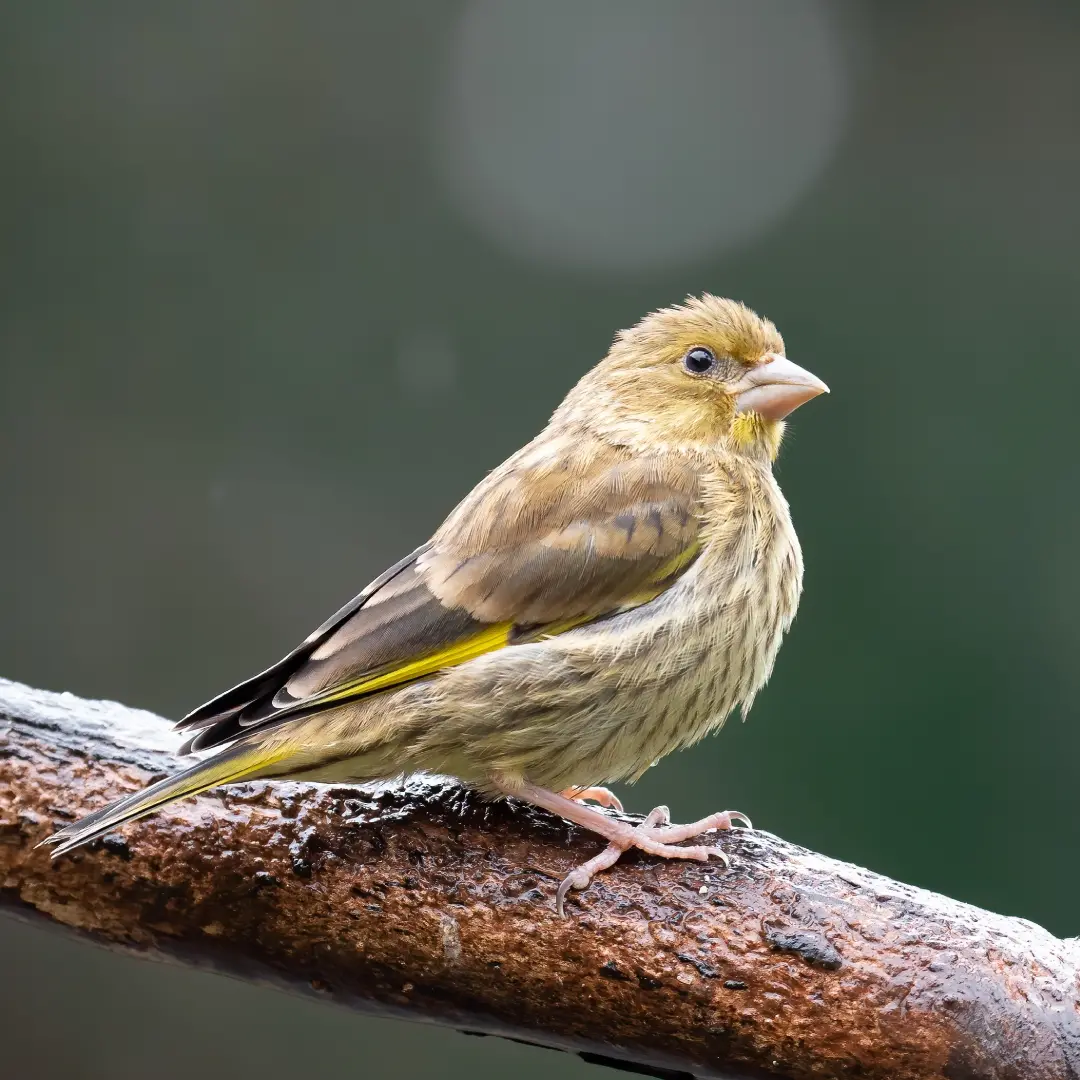
After the chicks hatch, both parents are actively involved in care and feeding. They predominantly provide insects during the early stages of life to ensure rapid growth. This cooperative parenting outlines a committed partnership that underpins the lifecycle of greenfinches, ensuring that the next generation receives the attention and nourishment they require.
Ultimately, the breeding and reproductive behaviors of greenfinches highlight the complexities of their life cycles. These adaptations ranging from courtship displays to nurturing care are crucial for maintaining and promoting their populations amid changing landscapes and challenges.
Nesting Habits of the Greenfinch
Nesting habits are among the most critical aspects of the greenfinch’s life cycle, reflecting their adaptability and resourcefulness. Much like experienced architects carefully selecting locations for construction, female greenfinches meticulously choose nesting sites to ensure the safety of their young. Understanding these nesting behaviors provides insight into the greenfinch’s reproductive strategies and overall survival.
Greenfinches typically prefer to nest in dense shrubbery or hedges, which offer natural camouflage and protection from predators. The ideal nesting locations are cloistered, elevated spots, ranging from 1 to 20 meters high, allowing for sufficient cover to safeguard their young. This strategic selection acts as an insurance policy, ensuring that their nests remain concealed from prying eyes.
| Nesting Aspect | Description |
|---|---|
| Nest Construction | Female-led process using twigs, grasses, and moss |
| Nesting Locations | Dense shrubs, hedgerows, and conifer trees |
| Nest Size | Typically cup-shaped, varying in dimensions |
When it comes to nest construction, females take on the primary role, skillfully weaving together materials such as twigs, moss, and grasses to create a sturdy home. This intricate building process highlights their creativity, as they select materials that not only provide strength but also provide insulation for the eggs and chicks. The nests are often lined with soft materials like feathers and moss, perfectly suited for nesting in the wild.
After the female lays her eggs often between three to six in a clutch she undertakes the responsibility of incubating them for approximately 13 to 14 days. During this period, she relies on the male for food, which plays a crucial role in keeping her nourished and providing for their growing family.
Once the eggs hatch, both parents take on the responsibility of feeding their chicks, providing insects primarily during the early life stages and transitioning to seeds as the chicks mature. This cooperative caregiving reflects a deep bond between the parents, showcasing their commitment to nurturing their offspring in a safe environment.
In conclusion, the nesting habits of greenfinches highlight their intricate strategies for reproductive success. Their adaptive behaviors, care in location selection, and intricate building processes operate like an elaborate dance, ensuring that generations of greenfinches can thrive in diverse habitats.
Mating Rituals and Courtship Displays
The mating rituals and courtship displays of greenfinches are essential components of their reproductive process, showcasing their vibrant social behaviors that strengthen pair bonds and aid in species propagation. Like dancers performing a finely choreographed ballet, male greenfinches engage in captivating displays aimed at attracting females and asserting their fitness.
An integral part of the courtship ritual involves singing, where males serenade prospective mates with a melodious blend of trills and warbles. These vocalizations are vital in signaling their health and vitality, allowing females to assess potential mates based on their vocal prowess. A strong and varied song acts as a beacon, drawing in females and emphasizing a male’s quality.
| Mating Aspect | Description |
|---|---|
| Singing | Melodious trills reflecting health and fitness |
| Visual Displays | Fluffing feathers and creating striking displays |
| Territorial Song | Vocal posturing to defend against rivals |
In addition to vocal displays, males engage in various visual displays to enhance their attractiveness. This may include fluffing their feathers, bobbing their heads, and spreading their wings, which serve to catch a female’s attention and display dominance over potential competitors. These dramatic physical displays resemble a performer showcasing their talent, reinforcing their readiness to mate.
Territorial behaviors during this season are equally significant. Males will vigorously defend their chosen territories against rival greenfinches, utilizing vocal aggression and physical presence to ward off competition. This behavior not only helps the territorial male secure a mate but also serves to attract females who may appreciate a male’s strength and resourcefulness.
Once a male successfully attracts a female through these captivating displays, they often work together to select nesting locations and build their nests. Although the female leads the nesting process, the involvement of the male in gathering materials reflects their cooperative courtship dynamics, reinforcing their bond while also ensuring the security of their future offspring.
Ultimately, the mating rituals and courtship displays of greenfinches are not just about procreation but represent an intricate dance of adaptation, attraction, and partnership. This rich tapestry of behaviors ensures the continuation of the species, reinforcing the connections between individuals and their environments.
Care of Chicks and Parental Responsibilities
In the intricate lifecycle of greenfinches, caring for their chicks is a fundamental responsibility that showcases the dedication and cooperation of both parents. This commitment not only embodies the essence of family in the avian world but also reflects sophisticated parenting strategies essential for the survival of their young.
Once the greenfinch chicks hatch, their parents engage in collaborative care, mirroring a well-rehearsed performance where both actors play vital roles. The female takes the lead in incubating the eggs, while the male focuses on foraging to supply the necessary sustenance crucial for their growing family. This partnership symbolizes teamwork, ensuring that both parents contribute to the well-being of their young from the outset.
| Responsibility | Role of Male | Role of Female |
|---|---|---|
| Incubation | Occasionally assists in protection | Primarily incubates eggs |
| Chick Feeding | Forages actively for food | Assists in feeding |
| Nest Protection | Guards against predators | Maintains hidden nest |
After the chicks hatch typically transitioning from pale blue eggs the parents engage in an exciting dynamic. Initially, the diet of the chicks consists primarily of protein-rich insects, essential for their rapid growth during the early days. This necessity for protein substantially drives the parent’s foraging efforts, as they work tirelessly to provide food, much like chefs preparing round-the-clock meals for their guests.
As the chicks mature and fledge, the responsibility of feeding continues to be shared equally. Both parents embark on foraging trips to gather a diverse diet, transitioning from insects to seeds as the chicks develop independence. This gradual increase in their own self-sufficiency acts as a bridge guiding the chicks from dependence to independence.
In addition to feeding, both parents guard the nest, keenly vigilant against potential predators. This protective behavior ensures the safety of the chicks until they are ready to leave the nest. Once fledging occurs, the parents continue to observe and assist the inexperienced chicks in learning how to forage and navigate their environments, helping to prepare them for the challenges of life on their own.
In summary, the care of chicks and parental responsibilities exhibited by greenfinches underscore the importance of collaborative parenting. This partnership not only instills essential skills in the next generation but also highlights the unique social structures embedded within avian communities, facilitating survival and continuity in ever-changing environments.
Conservation Status
The conservation status of greenfinches, particularly the European greenfinch (Chloris chloris), is a growing concern among ornithologists and wildlife conservationists. Current assessments indicate that this species, once abundant across Europe, is now recognized for its declining populations due to multiple threats, marking a critical juncture in their survival.
Conservation bodies categorize the greenfinch as “Red” on the UK’s Birds of Conservation Concern (BoCC) list, a reflection of its deteriorating status. This categorization is indicative of serious population declines, predominantly driven by diseases like trichomonosis an infectious disease that is particularly detrimental to greenfinch populations.
| Conservation Status | Current Population Trends |
|---|---|
| Categorized as “Red” | Significant decline of about 69% since 1967 |
| Affected by Trichomonosis | Spread through close contact at feeders |
| Population Size | Approximately 785,000 pairs in the UK as of 2016 |
The expected trajectory for the greenfinch is concerning. Factors such as habitat loss, increased predation in urban areas, and shifts in food availability further exacerbate their plight. As greenfinches become more reliant on limited habitats that remain, the pressures on their populations intensify, showcasing a delicate balance that necessitates monitoring and conservation efforts.
Understanding these population trends is crucial for future conservation strategies. Monitoring initiatives involve gathering data on population distribution and assessing the prevalence of diseases that must be mitigated to prevent further loss. As actions are taken to promote hygiene practices around feeders, awareness surrounding these issues can lead to more informed strategies for supporting greenfinch recovery.
Ultimately, the conservation status of the European greenfinch serves as both a warning and rallying call for conservationists, urging proactive measures to address the challenges these enchanting creatures face in a rapidly changing world.
Current Population Trends
The current population trends of greenfinches reveal a troubling decline, highlighting the urgent need for conservation efforts. Research indicates that the population of greenfinches in the UK has plummeted by approximately 69% between 1967 and recent assessments. This decline marks a significant downturn, transitioning from a formerly stable population to one now classified as at risk.
Contributing factors to this decline are manifold, but the outbreak of trichomonosis a disease that severely affects greenfinch survival has shown particularly devastating effects. Distributed through contact at feeders, this disease has led to severe mortality among adult birds. Locations that once teemed with vibrant greenfinches now host fewer individuals.
| Population Trend | Key Details |
|---|---|
| Estimated Breeding Population | Approximately 785,000 pairs in the UK (2016) |
| Decline from 1967-2020 | About 69% decrease overall |
| Regional Variability | Declines noted in northeastern and eastern areas |
Despite being historically abundant, regional declines have been particularly pronounced in areas like eastern Northern Ireland and central southern England, where local populations are struggling to rebound. In contrast, however, some populations in mainland Europe appear more stable, suggesting that localized conservation measures could effectively support recovery.
Efforts aimed at safeguarding greenfinch populations suggest that a multifaceted approach is required, encompassing habitat preservation, disease mitigation, and public awareness. Enhancing food availability and ensuring proper hygiene at local feeding sites may significantly support population recovery.
In conclusion, the ongoing trends in greenfinch populations illustrate the complexities the species faces, and underscore the critical nature of conservation endeavors directed toward safeguarding their future.
Threats Facing the Greenfinch
The threats to the greenfinch population are numerous, ranging from environmental changes to social pressures. Understanding these threats is essential for effective conservation strategies. A significant factor contributing to their decline is the outbreak of trichomonosis, an infectious disease that poses acute risks to greenfinch health.
Trichomonosis spreads among birds through shared feeding sites, with infected birds displaying symptoms that impair their ability to feed properly. This disease’s effects can lead to rapid deaths and reduce overall population viability. The close-knit social structures that characterize greenfinch communities render them susceptible to the disease’s spread, as congregating around feeders fosters conditions for transmission.
| Threats | Impact Assessment |
|---|---|
| Disease (Trichomonosis) | High mortality leading to population decline |
| Habitat Loss | Urbanization encroaching on natural spaces |
| Changes in Agricultural Practices | Reduced access to essential food sources |
Aside from disease, habitat loss significantly impacts greenfinch populations. Urbanization often leads to fragmenting their natural habitats, stripping away the dense vegetation needed for foraging and nesting. With gardens converted to concrete landscapes, greenfinches are left to compete for dwindling resources, leading to increased stress and reduced survival rates.
Moreover, changes in agricultural practices further contribute to threats faced by greenfinches. Industrial farming methods may lead to reduced food availability, compounded by the loss of hedgerows and wild plants that provide essential seeds and natural foraging opportunities. This agricultural shift poses vital challenges for a species that primarily depends on seed for nourishment.
In summary, threats facing the greenfinch population include a combination of disease, habitat loss, and agricultural practices that disrupt its ecological balance. Addressing these threats requires a dedicated conservation effort focusing on habitat preservation, public education, and proactive management strategies.
Conservation Efforts and Strategies
Conservation efforts for the greenfinch are paramount as the species faces multifaceted threats threatening its existence. Various strategies have been initiated to address their declining population and improve their ecological viability. Among the many strategies, raising awareness around wildlife conservation, facilitating habitat enhancements, and disease management are crucial components that underline a concerted conservation ethos.
Organizations like the British Trust for Ornithology (BTO) and the Zoological Society of London are at the forefront of monitoring greenfinch populations, seeking to gather essential data that inform strategic interventions. They emphasize the importance of understanding the details of population trends while tracking the prevalence of diseases that significantly impact survival rates.
| Conservation Actions | Description |
|---|---|
| Population Monitoring | Ongoing research by organizations like BTO |
| Disease Mitigation | Promoting hygiene practices near feeders |
| Habitat Restoration | Enhancing vegetation and food availability |
| Public Awareness Campaigns | Engaging communities to support greenfinch conservation |
Disease mitigation is particularly critical in combating trichomonosis. Conservationists advocate that bird feeders should be cleaned regularly to curtail disease transmission. Encouraging bird enthusiasts to maintain hygiene in their feeding activities plays a significant role in safeguarding not only greenfinches but also other avian species that share habitats.
In terms of habitat restoration, efforts to promote planting native vegetation and preserving natural spaces are vital for enhancing food availability. Encouraging policies that prioritize ecological practices in agriculture can restore hedgerows and benefit seed-eating species like greenfinches, fostering more stable populations.
Public awareness campaigns play a central role in engaging communities about conservation. These efforts educate individuals about the impact of their interactions with wildlife, encouraging responsible feeding practices and fostering goodwill towards bird conservation.
In summary, the conservation efforts aimed at protecting the greenfinch are multifaceted and emphasize the collaboration between organizations, communities, and individuals. With a concerted approach, there is potential to reverse the declines witnessed in recent years and ensure the survival of this cherished species.
Greenfinch in Culture and Art
The greenfinch occupies a rich space in cultural expressions, inspiring art, literature, and folklore that speaks to its symbolism, beauty, and enduring presence. This small bird has often served as a muse for numerous artists and storytellers, capturing the hearts of those who appreciate the intricacies of nature. In exploring the cultural impact of the greenfinch, we uncover a deeper connection between humanity and the natural world.
Symbolism in Literature and Folklore
In various cultures, greenfinches have come to symbolize joy, resilience, and the beauty of nature. The presence of this bird in folklore often brings messages that resonate with humanity: stories about the freedom found in nature and the spirit of joy that can be drawn from observing the smallest details of life.
In Celtic folklore, for instance, the greenfinch embodies themes of love and connection to the natural world. Various tales depict the bird as a messenger of hope, instilling a sense of freedom that resonates deeply with those who have been inspired by nature’s wonders. As depicted in ancient Gaelic mythology, the song of the greenfinch is believed to inspire warriors before battle, offering an uplifting reminder of the beauty that exists alongside the trials of life.
Similarly, in Native American traditions, the greenfinch is viewed as a symbol of resilience, encapsulating the spirit of joy in the face of adversity. Its vibrant plumage and cheerful songs serve as reminders of the optimistic outlook valued by many indigenous cultures, thus reinforcing the interconnectedness between humans and the natural environment.
Ultimately, the symbolism of the greenfinch in literature and folklore carries profound messages about embracing life and finding joy in nature’s gifts. These narratives serve to remind us of the simple pleasures brought forth by the natural world around us.
Representation in Visual Arts
The greenfinch has inspired countless artists throughout history, serving as a prominent subject in visual arts. From detailed illustrations in field guides to impressive paintings capturing its colors and movements, artists have sought to depict its beauty and vitality. Such representations convey the deep appreciation for wildlife and reflect broader themes of nature and spirituality.
Famed paintings of greenfinches often emphasize their striking yellow-green plumage, skillfully capturing the essence of its dynamic presence. Artists portray the greenfinch as representative of freedom and grace, embodying the broader intersection of humanity and nature. In numerous works, this small bird serves as an allegory for the beauty found in simplicity, reminding viewers of the intricate ecosystems surrounding them.
Moreover, in Christian symbolism, greenfinches appear in various artworks signifying hope and divine love. Many interpret their bright colors as reflections of divinity and purity, emphasizing the sacred connection that can be found in the natural world.
Artistic movements celebrating wildlife not only serve as a testament to the beauty of avian life but also contribute to ecological consciousness. Birds like the greenfinch have inspired conservation messages, encouraging appreciation for nature’s diversity while advocating for the protection of avian habitats.
Influence on Birdwatching and Birdkeeping
As greenfinches find a prominent place in artistic representation, they also play a significant role in the burgeoning interests of birdwatchers and birdkeeping enthusiasts. The charm of these birds, coupled with their captivating behaviors, has made them a favorite among nature lovers. Their vibrant presence adds beauty to gardens and encourages both observation and responsible ownership.
Birdwatching has become a cherished pastime for many, facilitated by the accessibility of tools like binoculars and smartphones. Greenfinches, often visiting gardens and parks, capture the interest of observers who enjoy watching their social interactions, feeding habits, and unique vocalizations. Enthusiasts are consistently drawn to their beauty, leading to an increased appreciation of local biodiversity.
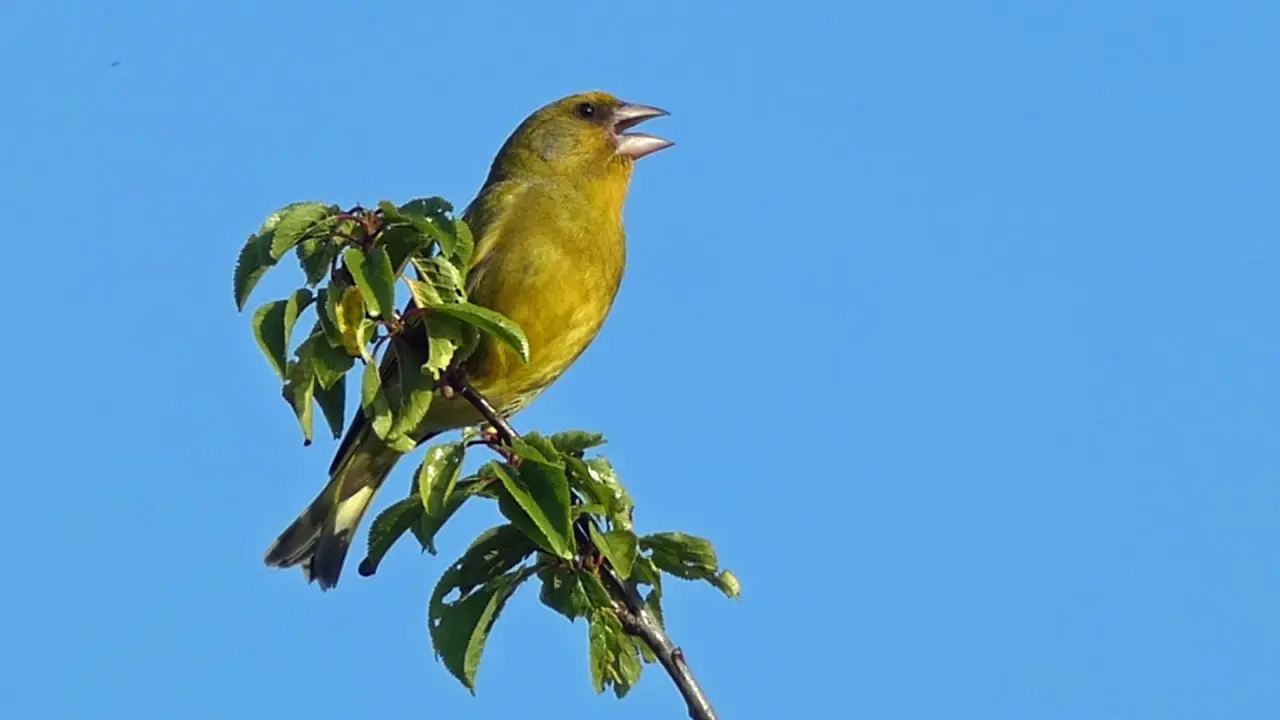
For birdkeepers, the greenfinch represents the allure of caring for a lively, vibrant species. However, ethical considerations around captivity and care guide the practices of many responsible birdkeepers. The charm of greenfinches reflects the connection between humans and animals, reminding us of the importance of conservation efforts and proper care.
In summary, the greenfinch not only permeates cultural expressions but also highlights the ongoing relationship between humans and the natural world. Its representation in art, literature, and recreational activities showcases the joyful synergy that exists between our lives and the enchanting species that populate our environments.
Fun Facts About Greenfinches
Greenfinches are lively birds that carry a wealth of fascinating characteristics, making them a source of intrigue and admiration for birdwatchers and nature enthusiasts alike. Here are some engaging fun facts that showcase their unique traits and behaviors:
- Distinctive Appearance: Male greenfinches stand out with their bright olive-green plumage and striking yellow accents, while females appear more subdued, featuring browns and greys. This contrast exemplifies their adaptability to various environments, showcasing a delightful visual dynamic in mixed flocks.
- Engaging Songs: Greenfinches are known for their melodious songs that consist of cheerful trills and drawn-out wheezes, often described as “trill-lill-lill.” Their unique vocalizations contribute to the charming ambiance of gardens and woodlands, delighting anyone fortunate enough to hear them.
- Social Feeding Habits: Highly sociable, greenfinches often feed in groups. Their association with other ground-foraging bird species allows them to showcase cooperative behaviors, sharing information about food sources and enhancing overall foraging success.
- Acrobatic Flight: These birds are known for their impressive flying skills, exhibiting acrobatics that include hovering and twisting mid-air. This agility is most evident when they are extracting seeds from plants, demonstrating their physical prowess while foraging.
- Feeding Preferences: Greenfinches primarily feed on seeds, particularly thistles, and they enjoy visiting garden feeders, where they can consume sunflower hearts and various nutritious mixes. This behavior reflects their adaptability to human environments.
- Breeding and Nests: Greenfinches usually begin breeding in April, often constructing nests in dense vegetation. Their nests are well-camouflaged, providing safety for their young against potential predators.
- Migrant Trends: While most greenfinches are resident birds, some northern populations migrate south during winter. Specifically, individuals from these regions often seek refuge in the milder climates of the UK.
- Responding to Human Interaction: Greenfinches are quite adaptable and can become familiar with individual humans, often returning to areas where they have been regularly fed. This interaction enhances birdwatching experiences, fostering a connection between humans and wildlife.
- Disease Vulnerability: Unfortunately, greenfinches have experienced population declines due to diseases like trichomonosis, emphasizing the critical need for proper hygiene at feeding sites to prevent disease spread among birds that congregate.
These enchanting behaviors and characteristics capture the hearts of nature enthusiasts, making greenfinches a cherished species that beautifully represents the vibrancy and richness of avian life.
Unique Traits of Greenfinch Behavior
Diving deeper into the realm of greenfinch behavior unveils a plethora of unique traits that shape their interactions with one another and their environment. These behaviors not only highlight their adaptability but also present a glimpse into the social structure that characterizes their lives.
- Bubbly Social Interactions: Greenfinches are naturally social birds that often engage in lively interactions, particularly during the non-breeding season. Their sociable nature lends itself to forming flocks that thrive on communal foraging and mutual awareness, reminiscent of friends gathering for a meal.
- Aggressive Competitive Nature: While social, greenfinches can exhibit aggressive behaviors, especially at feeding sites. Their assertiveness ensures access to food resources, reflecting a competitive spirit that complements their social structure. However, this competitive behavior must be balanced to secure opportunities among group members, dictating dynamics akin to a bustling marketplace.
- Playful Foraging Techniques: Foraging behaviors among greenfinches reflect a level of playful exploration. They employ both ground-foraging and arboreal techniques, showcasing impressive agility in accessing food. Their ability to adapt to varied feeding strategies allows them to forage effectively across different habitats.
- Seasonal Changes in Social Behavior: As the seasons shift, so too do the social behaviors of greenfinches. During mating seasons, male greenfinches engage in elaborate courtship displays and territorial behaviors, showcasing their fitness. However, outside breeding periods, their behaviors become more group-oriented, facilitating cooperation and learning among flock members.
| Unique Behavioral Traits | Description |
|---|---|
| Sociability | Engaging interactions among flock members |
| Competitive Nature | Assertiveness at feeding sites |
| Playful Foraging Techniques | Agile movements and adaptability while foraging |
In summary, the unique traits of greenfinch behavior create a sophisticated tapestry interwoven with social dynamics, competitiveness, and adaptive strategies that enable them to thrive in diverse environments. These behaviors encapsulate their role as not just another bird species but as active participants in the complex web of life that defines our natural world.
Recordings of Rare Vocalizations
The vocalizations of greenfinches, particularly their songs and calls, provide valuable insights into their behavior and social dynamics. Capturing both routine interactions and rare vocal recordings helps enthusiasts and researchers alike appreciate the complexity of their communication.
These recordings reveal an impressively varied repertoire that speaks to their adaptability in vocal communication. Among the typical song patterns, the melodious trills often resonate throughout gardens and woodlands, characterized by phrases that may resemble a musical motif.
| Vocalization Type | Characteristics | Context |
|---|---|---|
| Cheerful Songs | Series of trills and whistles | Breeding season, attracting mates |
| Alarm Calls | Rapid, high-pitched notes | Warning fellow birds of predators |
Rare Vocalizations: Some recorded behaviors might include spontaneous calls during foraging, expressing contentment, or occasional calls reflecting alarm signals. Specific recordings captured in the wild can be found in ornithological databases, offering researchers and enthusiasts unparalleled access to the subtle nuances of their vocalizations.
By closely studying these recordings, researchers engage in a more profound understanding of communication patterns, behavior, and ecological adaptations. Such insights are vital in uncovering the complex dynamics within greenfinch communities and their interactions with various environmental factors.
Most Common Misconceptions
Like many birds, the greenfinch has garnered its fair share of misconceptions that, if left unaddressed, can lead to misunderstandings about its ecology and behaviors. Debunking these myths not only enhances appreciation for this species but also promotes informed conservation efforts.
- All Greenfinches are Brightly Colored: A prevalent misconception is that all greenfinches exhibit vibrant green plumage. In reality, female greenfinches display a more muted appearance comprised of browns and greys, designed to provide camouflage during nesting periods. Understanding this difference is essential in accurately identifying these birds in the wild.
- Greenfinches are Rare: Another common fallacy is the belief that greenfinches are infrequently seen. Despite population declines, greenfinches are relatively widespread across Europe and often adapted to urban habitats, making them common fixtures in parks and gardens, especially since the 1950s.
- Limited Diet: Many believe that greenfinches exclusively consume seeds, overlooking their varied diet that also includes flower buds, berries, and insects important dietary adjustments that are particularly critical during the breeding season for their young.
| Misconception | Truth |
|---|---|
| All greenfinches are brightly colored | Females have a more subdued appearance |
| Greenfinches are rare | They are widespread and adapt to urban spaces |
| Limited diet of seeds | Diet includes insects, buds, and fruits as well |
By educating the public about these misconceptions, we enhance awareness of the greenfinch’s true nature and foster a deeper connection to bird conservation efforts. Understanding their ecological roles proves essential for managing and preserving populations in a rapidly changing environment.
In conclusion, the greenfinch encapsulates a multifaceted narrative ranging from its charming characteristics and behaviors to its vital ecological roles and cultural significance. Engaging with this remarkable species allows us to appreciate the beauty of the natural world, fostering a sense of interconnectedness with the diverse creatures that share our landscapes. Through comprehensive understanding and proactive conservation, we can work towards ensuring the survival of the greenfinch, enriching both our environments and the broader tapestry of life.





